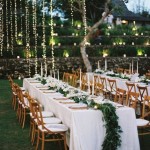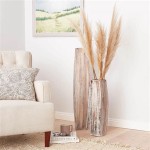How To Decorate a Planner Cover: A Comprehensive Guide
Personalizing a planner is a popular method for enhancing its functionality and creating a more enjoyable planning experience. The planner cover serves as the first point of contact with the planner, and its decoration can reflect individual style, motivations, and organizational preferences. This article provides a comprehensive guide on how to decorate a planner cover, covering various techniques, materials, and design considerations.
Understanding Planner Cover Materials and Limitations
Before embarking on the decoration process, it is crucial to understand the material composition of the planner cover. Common materials include paper, cardstock, synthetic leather (PU leather), fabric, and plastic. Each material presents different characteristics in terms of durability, texture, and receptiveness to various decorating techniques. Understanding these properties is essential for selecting appropriate methods and materials that will adhere well and withstand regular use without damaging the cover.
For example, a paper or cardstock cover, frequently found in budget-friendly planners, is relatively absorbent and easily accepts inks, adhesives, and paper-based embellishments. However, it is also more susceptible to tearing and water damage. Synthetic leather covers, on the other hand, are more durable and water-resistant but may not readily accept certain adhesives or inks. Plastic covers are very durable and wipeable but might require special primers for paint or adhesives to properly adhere. Determining the material and its limitations will prevent damage and create a long-lasting decorated cover.
Furthermore, the construction of the planner cover should be considered. A spiral-bound planner, for instance, allows for unrestricted decoration across the entire cover surface. Conversely, a book-bound planner may have limitations due to the spine and potential for creasing or bending during decoration. Taking these factors into account allows for a more informed approach to decorating.
Exploring Decoration Techniques and Materials
A multitude of techniques and materials can be employed to decorate a planner cover, ranging from simple and subtle enhancements to elaborate and personalized designs. The choice of technique depends on individual artistic skill, desired aesthetic, and the specific properties of the planner cover material.
One widely accessible technique is the use of stickers. Stickers offer a quick and easy way to add visual interest and personality to a planner cover. A wide array of stickers are available, including decorative stickers, functional stickers (e.g., flags, labels), and alphabet stickers for creating custom titles or monograms. Choosing acid-free and archival-quality stickers ensures longevity and prevents damage to the underlying cover material.
Washi tape is another versatile and popular material. Washi tape, a decorative paper tape originating from Japan, comes in a vast range of colors, patterns, and widths. It can be used to create borders, stripes, geometric designs, or to frame photographs and other embellishments. Washi tape is typically repositionable, making it forgiving for beginners.
For those with artistic inclinations, drawing and painting are viable options. Permanent markers, gel pens, and acrylic paints can be used to create custom artwork directly onto the planner cover. When using paints, it is often necessary to apply a primer beforehand to ensure proper adhesion and prevent the paint from cracking or peeling. It is important to select paint markers and acrylic paints that are suitable for the planner’s cover type.
Collage techniques involve adhering various materials to the planner cover to create a layered and textured design. Suitable materials include photographs, ephemera (vintage papers, ticket stubs), fabric scraps, and pressed flowers. Adhesives like glue sticks, double-sided tape, and decoupage medium can be used to secure these materials. It is advisable to apply a sealant over the collage to protect it from damage and ensure its longevity.
For a more three-dimensional effect, embellishments such as brads, eyelets, charms, and ribbons can be added. These embellishments can be attached using adhesives, sewing, or by creating holes in the cover. Careful consideration should be given to the placement and security of these embellishments to prevent them from snagging or falling off.
Heat embossing offers a unique and textured finish. This technique involves stamping an image onto the cover using embossing ink, applying embossing powder, and then heating the powder with a heat tool to melt and fuse it. Heat embossing can create raised designs in a variety of colors and finishes.
Digital printing introduces opportunities to create personalized designs using graphic design software. Custom images, patterns, or text can be designed and printed onto adhesive paper or clear sticker sheets and then applied to the planner cover. This method allows for precise control over the design and offers a high level of customization.
Design Considerations for Planner Cover Decoration
Beyond the selection of techniques and materials, careful consideration should be given to the overall design of the planner cover. A well-designed cover is not only aesthetically pleasing but also functional and reflective of the user's personality and goals.
A primary design consideration is the overall theme or style. This may be based on personal preferences, such as a particular color palette, artistic movement, or subject matter. Choosing a cohesive theme will help to guide the selection of materials and techniques, ensuring a harmonious and visually appealing result.
Color plays a critical role in design. The choice of colors can evoke specific emotions, create visual contrast, and tie different elements together. A balanced color scheme is essential for a visually pleasing design. Consider using a color wheel or online color palette tools to explore different color combinations.
Layout and composition are also important aspects of design. Consider the placement of different elements on the cover to create a balanced and visually appealing composition. Experiment with different layouts, such as symmetrical, asymmetrical, or rule-of-thirds, to find the most effective arrangement.
Font selection is pertinent if text is incorporated into the design. Choose fonts that are legible and complement the overall style. Consider the size and weight of the font to ensure that it is easily readable.
Functionality should also be kept in mind. Avoid covering up important features of the planner, such as calendars, tabs, or binding. If the planner is frequently carried, consider protecting the decorated cover with a clear adhesive film or laminate to prevent damage from wear and tear.
Personalization is what makes a decorated planner cover truly unique. Consider incorporating elements that reflect individual interests, hobbies, or goals. This could include photographs, quotes, or symbols that are meaningful to the individual.
Iteration and experimentation are valuable during the design process. Before committing to a final design, it is helpful to sketch out different ideas or create mockups to visualize the end result. This allows for adjustments and refinements before applying any permanent materials to the planner cover.
Finally, consider the long-term durability of the decoration. Choose materials and techniques that are resistant to fading, scratching, and water damage. Applying a sealant or protective coating can help to extend the life of the decorated cover.
By understanding the materials, exploring various decorating techniques, and carefully considering design principles, individuals can create personalized and functional planner covers that enhance their planning experience and reflect their unique style.

Decorating A Planner Cover Homey Oh My

Decorating A Planner Cover Homey Oh My

Decorating A Planner Cover Homey Oh My

Decorating A Planner Cover Homey Oh My

Decorating A Planner Cover Homey Oh My

How To Design Planner Cover

How To Design Planner Cover

The Easy Way To Decorate Your Planner Cover Crafts Mad In

6 Practical Ways To Decorate Your Paper Planner Overstuffed Life

Make Your Own Notebook Cover Or Planner Bookbinding Tutorial
Related Posts







